You might be wondering how the Titanic, once deemed the “unsinkable” ship, compares to the giant floating resorts we know today as modern cruise ships. When the Titanic embarked on its tragic maiden voyage in 1912, it represented the height of luxury and cutting-edge technology for ocean liners.
In contrast, today’s cruise ships are designed with ultimate luxury and passenger entertainment in mind, resembling more a miniature city than a simple ship. These modern giants of the sea offer everything from Broadway-style shows and elaborate water parks to gourmet dining experiences, prioritizing passenger comfort over all else.
This article will explore the similarities and differences between the RMS Titanic and current cruise ships, delving into aspects such as size, design, amenities, safety features, and the overall passenger experience.
The Titanic Wasn’t Actually a Cruise Ship

Despite its fame and the luxury it offered passengers, the Titanic wasn’t actually a cruise ship. Instead, it was an ocean liner, a type of ship designed for transporting people across the ocean from one point to another. Ocean liners usually have a stronger build and a deeper hull to handle rough sea conditions. They typically operate on fixed routes, like the transatlantic crossings between Europe and North America. Additionally, ocean liners are faster than cruise ships, with average speeds of about 25-30 knots (29 mph/47 kph).
In contrast, cruise ships are focused on leisure and entertainment, providing a vacation experience with stops at various ports of call. They are like floating resorts with numerous amenities such as swimming pools, theaters, restaurants, and sometimes even ice-skating rinks or climbing walls. The journey on a cruise ship is meant to be as enjoyable as the destinations themselves, with activities and entertainment available throughout the day and night.
Titanic vs. Modern Cruise Ship: Size
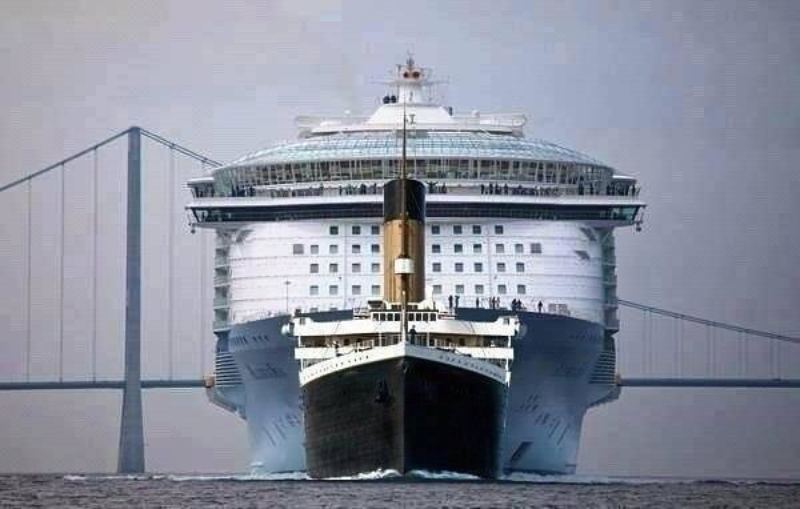
Gross tonnage
The best way to compare the size of the Titanic vs. a modern cruise ship is by using GT (gross tonnage). GT is used to measure a ship’s overall internal volume. The Titanic, once the largest ship in the world, had a gross tonnage (GT) of 46,329. Today, that figure would not even place it within the top 64 largest cruise ships!
For comparison, Royal Caribbean’s Symphony of the Seas has a gross tonnage of around 228,081—nearly five times larger than the Titanic. The world’s largest cruise ship, the Icon of the Seas, has a gross tonnage of 248,663. Even Carnival’s smallest ship, the Carnival Elation, has a gross tonnage of 70,367, far surpassing the Titanic.
Length

The Titanic was shorter than modern cruise ships, stretching around 882 ft. (269 m) in length. In comparison, the Icon of the Seas measures a notable 1,196 ft. (364 m) long, and the Wonder of the Seas isn’t far behind at 1,188 ft. (362 m). Both of these modern cruise ships exceed the length of the Titanic by over 300 ft. (about 91 m).
Despite the increase in ship sizes, the difference in length between the Titanic and many modern cruise ships isn’t as large as it seems. For example, Royal Caribbean’s smallest ship, the Majesty of the Seas, is 879 ft. long (268 m), which is 3 ft. shorter than the Titanic. The average length of a cruise ship today is around 1,000 ft. (304 m). This shows that despite modern ships being larger, the average length hasn’t increased by much since the Titanic.
The reason modern cruise ships are not much longer than the Titanic is mostly due to the limitations of port infrastructure. Most ports can’t accommodate ships beyond a certain length, which naturally caps how long these ships can be. As a result, cruise lines have adapted by designing taller ships with multiple decks, rather than extending their length.
Beam (Width)
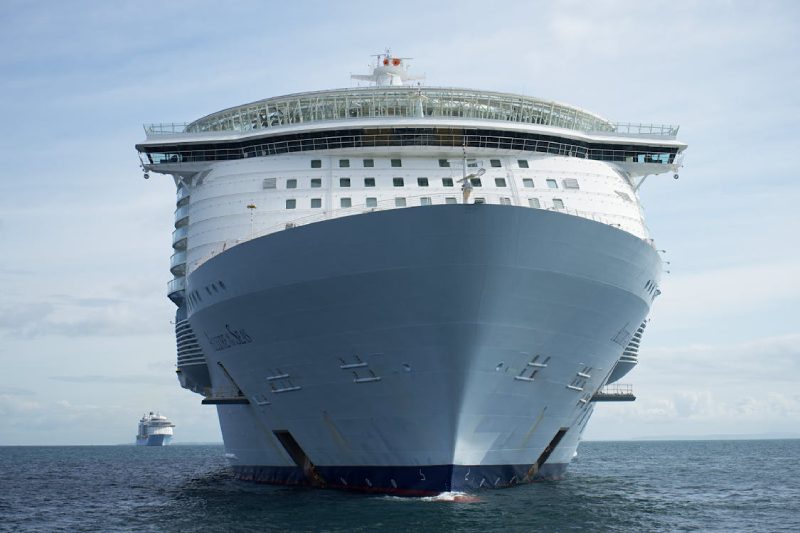
The Titanic had a beam (width) of 92 ft. (28 m). In comparison, modern cruise ships are much wider. For instance, Royal Caribbean’s Icon of the Seas has a beam of 159 ft (48 m), and the Wonder of the Seas measures slightly narrower at 155 ft. (47 m). Even Royal Caribbean’s smallest ship, the Majesty of the Seas, has a beam of 105 ft. (32 m), which still exceeds the Titanic’s width by quite a lot.
Draft
The draft of a ship measures the distance between the waterline and the lowest part of the ship’s hull. Surprisingly, the draft of large ships like the Titanic and modern cruise ships hasn’t changed significantly. For instance, the Titanic had a draft of 33 ft. (10 m), allowing it to navigate deep waters comfortably, whereas modern cruise ships like Icon of the Seas have a slightly lower draft of 30 ft. (9 m).
On average, cruise ships today have a draft of about 20 ft. (6 m), which is less than the Titanic’s. Smaller cruise ships, such as the Empress of the Seas and the Viking Star, have even shallower drafts of about 23 ft. (7.1 m) and 21 ft. (6.3 m). This allows them to access a wider range of ports and coastal areas.
Height
The Titanic stood about 141 ft. (43 m) tall from the waterline. However, much of this height was due to its towering funnels, which were around 63 ft. (19 m) tall. Without the funnels, the height of the Titanic above the waterline was closer to 78 ft. (24 m). In contrast, the Icon of the Seas and Wonder of the Seas stand much taller at 196 ft. (60 m) and 155 ft. (47 m) above the waterline, respectively.
Decks
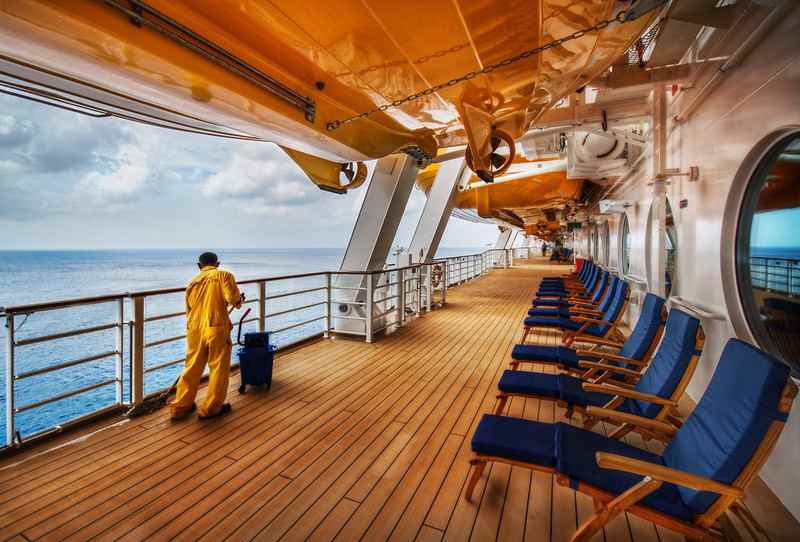
The Titanic had 9 decks. These decks included areas for first, second, and third-class passengers, each with different amenities and comfort levels. The Titanic’s decks featured extravagant facilities like a gymnasium, pools, and opulent dining rooms that catered to the elite, while the lower decks, which housed the majority of the passengers, were significantly more cramped and had fewer amenities.
In contrast, modern cruise ships usually have anywhere from 10 to 20 decks, with a standard being around 15. These decks have modern amenities that extend across all class divisions. The decks offer a wide range of amenities, such as water parks, theaters, multiple restaurants, and lounges accessible to all passengers.
Passenger capacity
The Titanic could carry up to 2,435 passengers. This number is quite low compared to the capacity of today’s cruise ships. For example, the Icon of the Seas has a passenger capacity of 7,600, while the Wonder of the Seas can accommodate 7,084 passengers. Even smaller modern ships like the Carnival Vista far surpass the Titanic with a maximum passenger capacity of 4,977.
Titanic vs. Modern Cruise Ship: Design & Aesthetics
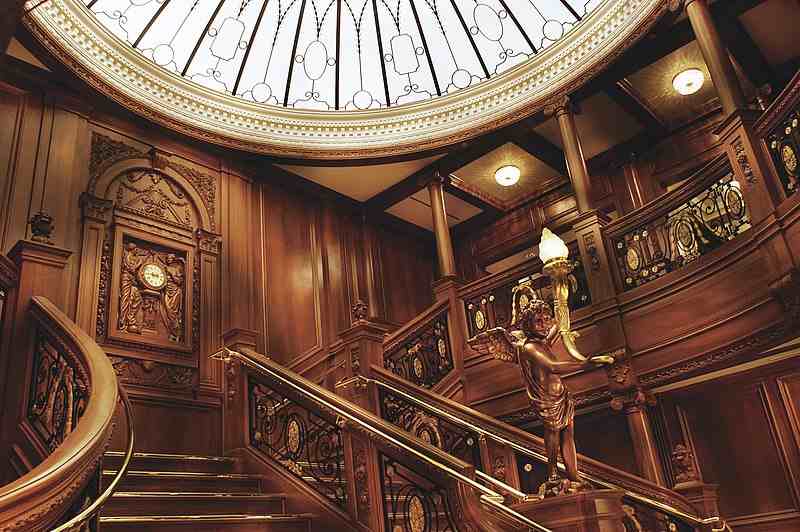
The Titanic was specifically designed to offer luxury and comfort. Its interior resembled that of a grand hotel, featuring lavish decorations, fine dining areas, and an iconic grand staircase. This design was intended to attract wealthy passengers with the elegance and opulence typical of high-end Edwardian architecture.
Modern cruise ships, on the other hand, aim to optimize space and provide a variety of amenities. The design is more focused on functional luxury, with features that accommodate thousands of passengers and include extensive entertainment options like theaters, spas, and pools.
Titanic vs. Modern Cruise Ship: Construction Materials and Techniques
Hull and compartments
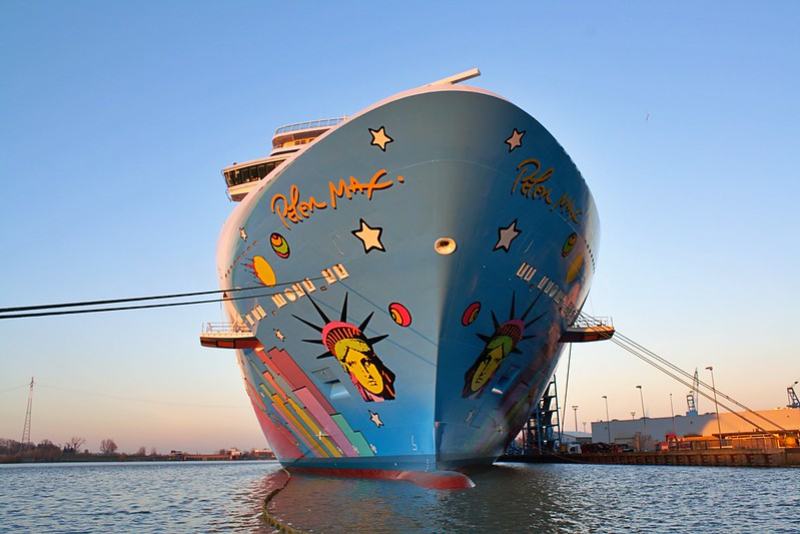
The Titanic was famously declared “unsinkable” due to its design, which included a double-bottom hull and 16 watertight compartments. The doors were designed to close manually or automatically at the water level. Despite this, the Titanic’s compartments were open at the top, which allowed water from the breached compartments to spill over into others as the ship tilted.
On the other hand, modern cruise ships are built with double-hull technology and multiple watertight compartments that extend up the side of the hull. These features provide better structural integrity and improve the ship’s ability to prevent flooding.
Welds vs. rivets
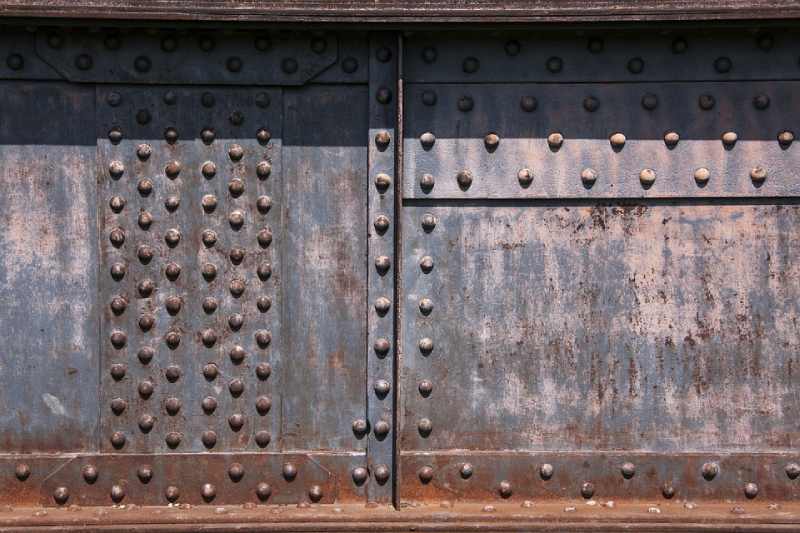
The Titanic was constructed using over three million rivets. Rivets, which are metal pins used to fasten together pieces of metal, were hammered into place all over the Titanic’s hull and upper decks. This method was not only time-consuming but also allowed for less flexibility in materials. The use of iron rivets poses a safety risk as they are more brittle and prone to snapping under extreme pressure or when they contract in cold temperatures. This brittleness contributed significantly to the catastrophic failure of the Titanic’s hull when it struck the iceberg.
Today, modern ships are constructed using welding technology rather than rivets. Welding creates a strong, seamless bond that is far more durable and long-lasting than rivets. This method involves melting the metal pieces together to form a single piece, which eliminates the weak spots that rivets can create at the joints. Additionally, welded seams are much better at withstanding extreme pressures and temperatures, greatly reducing the likelihood of structural failures similar to those experienced by the Titanic.
Titanic vs. Modern Cruise Ship: Safety Features
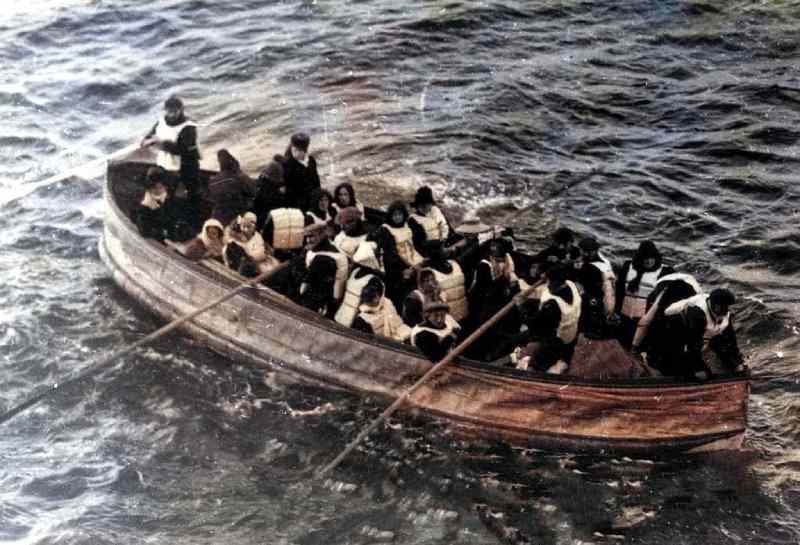
The Titanic, while deemed unsinkable in 1912, was equipped with safety features that were advanced for its time but are considered inadequate by today’s standards. It carried only 20 lifeboats, which could accommodate less than half of the vessel’s total number of passengers and crew. This was actually more than British law required at the time, which mandated enough lifeboats for 30% of a ship’s capacity.
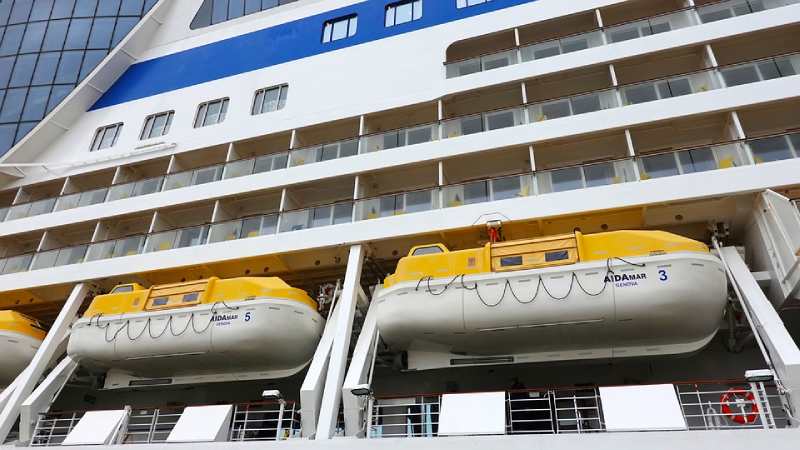
On the other hand, modern cruise ships adhere to strict international safety laws that require enough lifeboats for everyone on board. Additionally, these ships are equipped with advanced firefighting tools, water-tight compartments that can seal off a breached hull, sophisticated alarms, and sprinkler systems—all designed to handle emergencies more effectively.
Titanic vs. Modern Cruise Ship: Technology
Navigation technology
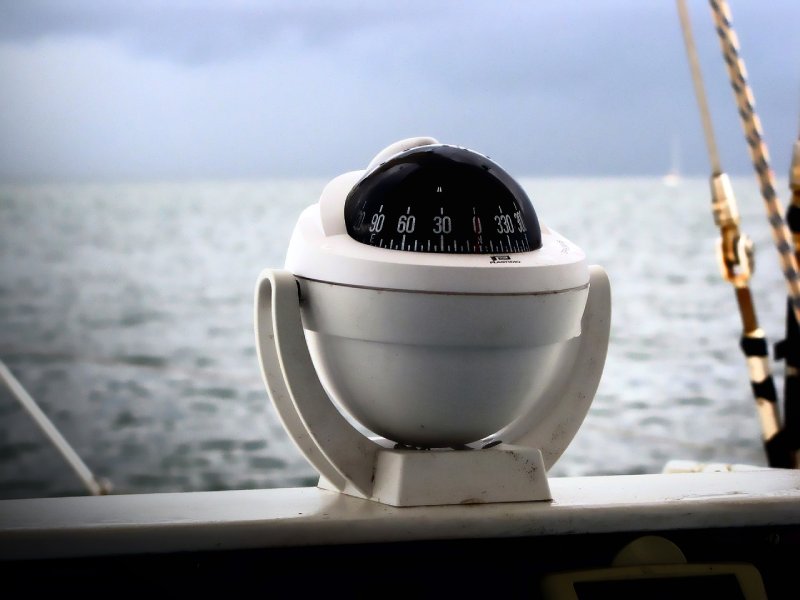
Navigation on the Titanic was heavily reliant on celestial navigation, using sextants and manual calculations based on the positions of stars and planets. This method, while effective at the time, lacked precision.
Today’s cruise ships use a combination of GPS (Global Positioning System) and other high-tech navigational aids like RADAR (Radio Detection and Ranging) and SONAR (Sound Navigation and Ranging), which allow for real-time, accurate tracking and positioning. This technology provides data on the ship’s location relative to icebergs, landmasses, and other vessels, reducing the risk of collision.
Communication technology
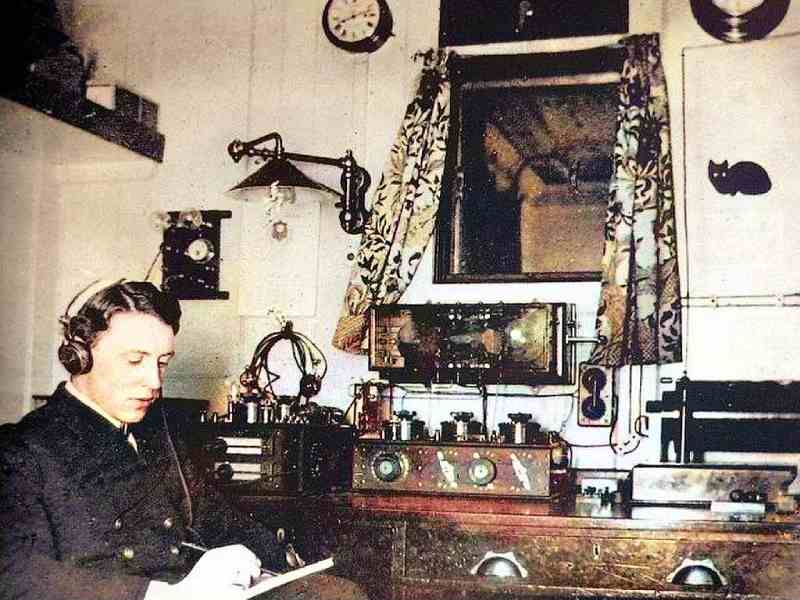
The Titanic had a wireless telegraph, which was state-of-the-art at the time and capable of sending distress signals and messages over long distances. However, the effectiveness of this system was limited by the technology of the era, which did not allow for continuous communication.
Modern cruise ships are equipped with satellite phones, Wi-Fi, and data links that enable continuous, worldwide communication. This not only improves safety by ensuring that ships are always in contact with coastal commands, weather stations, and other ships, but also improves overall management and coordination in emergency situations.
Weather forecasting and iceberg monitoring technology
In 1912, the Titanic received iceberg warnings but lacked the technology needed to accurately map their locations in real time. Modern cruise ships benefit from advanced meteorological forecasting tools that use satellite imagery and radar to provide accurate data. These systems enable ships to navigate safely through hazardous conditions by altering their course well in advance to avoid icebergs, storms, and other hazards.
Titanic vs. Modern Cruise Ship: Ticket Price

The cost of a ticket on the Titanic varied based on the class of service a passenger chose. A first class suite, the epitome of luxury aboard the Titanic, would cost a passenger about $4,350, equivalent to around $133,132 today. Those who opted for a regular first class berth would have paid significantly less, around $150, which translates to about $4,591 today.
For those traveling in second class, the experience was more modest but still comfortable, with tickets costing $60, or about $1,834 today. The most economical option was third class, which catered primarily to immigrants and lower-income passengers. A ticket in third class cost just $35, or about $1,071 today, providing basic accommodations.
The average cost of a week-long cruise on a mainstream cruise line like Royal Caribbean or Carnival depends on the type of cabin you choose. For an interior cabin, prices generally start at around $700 per person. If you prefer a room with a view, an ocean view cabin can cost about $800 to $900 per person. For those who want to enjoy their own private outdoor space, balcony cabins typically range from $1,000 to $1,200 per person. For a more luxurious experience, suites on these cruises start at around $1,500 per person and can go much higher depending on size and amenities.
Titanic vs. Modern Cruise Ship: Passenger Experience
Cabin facilities
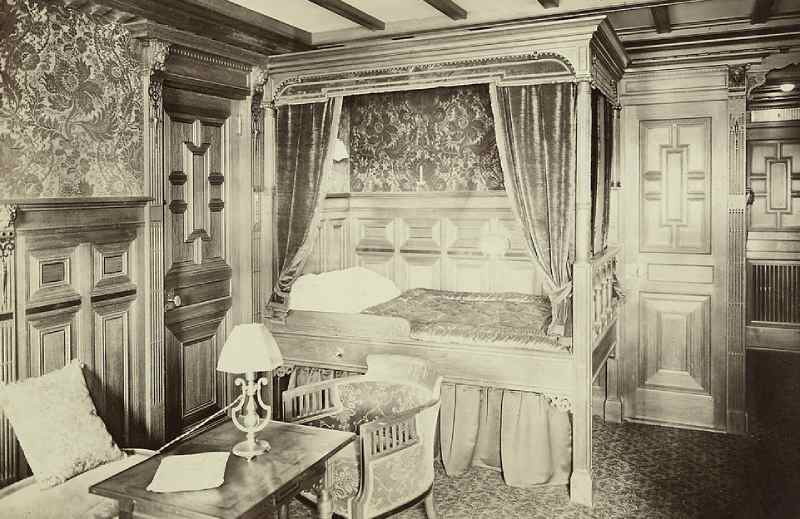
The cabin facilities on the Titanic varied significantly across its class system. First-class passengers enjoyed spacious, beautifully decorated rooms with fine furnishings that resembled luxury hotel rooms. Second-class cabins, while less opulent than those in first-class, still offered a good level of comfort with features such as oak paneling and private washbasins. In contrast, third-class accommodations were smaller, consisting primarily of bunk beds in small, cramped rooms without the luxurious amenities found in first-class.
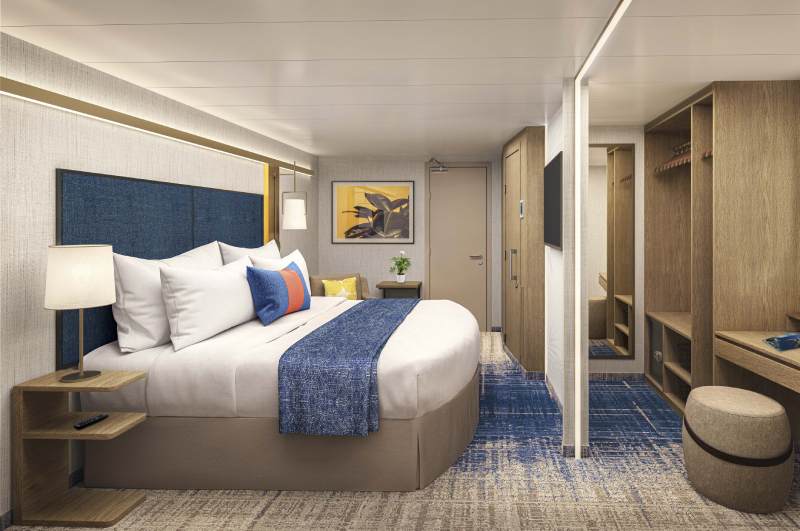
In contrast, cruise ships are designed for leisure rather than transportation, so all types of cabins on modern cruise ships are relatively comfortable. Interior cabins are the most affordable option, located in the ship’s interior without windows, providing a cozy but compact space. Ocean view cabins feature a window or porthole with a view of the sea, giving a sense of space and connection to the outside. Cabins with balconies add a private outdoor area where passengers can enjoy fresh sea air and private views. At the top end, suites offer more space with separate living areas, luxurious amenities, and often enhanced services like priority boarding and concierge service.
Dining options
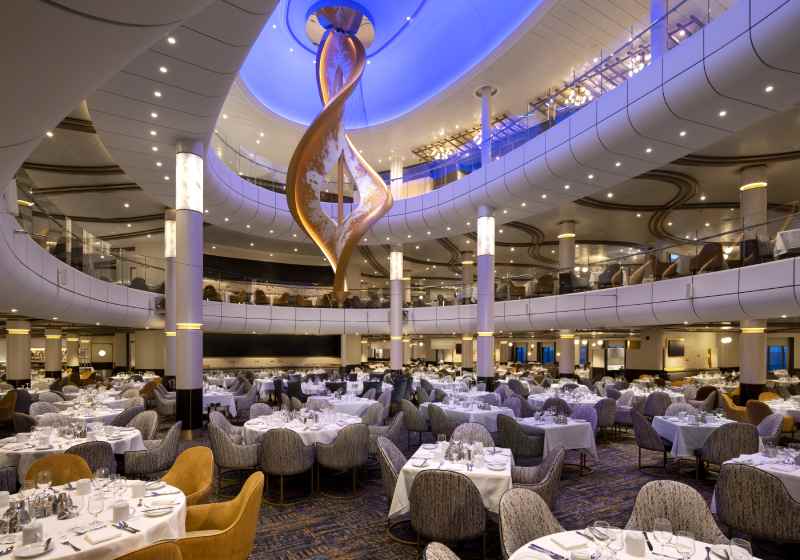
Dining aboard the Titanic was a reflection of social standing: first-class passengers dined in magnificence with menus featuring gourmet options such as filet mignon and lobster. Second-class guests enjoyed good quality meals that included roasted meats and baked fish, while third-class passengers had basic, hearty meals like stew and porridge.
Contrasting this, modern cruise ships offer various dining experiences that do not depend on passenger class. Guests can choose from many dining options, including buffet-style dining, specialty restaurants (Italian, Mexican, Asian cuisines, etc.), and even 24-hour eateries. For example, you could enjoy spaghetti carbonara at an Italian restaurant, sushi at an Asian bistro, or a late-night burger at a diner.
Entertainment and recreation
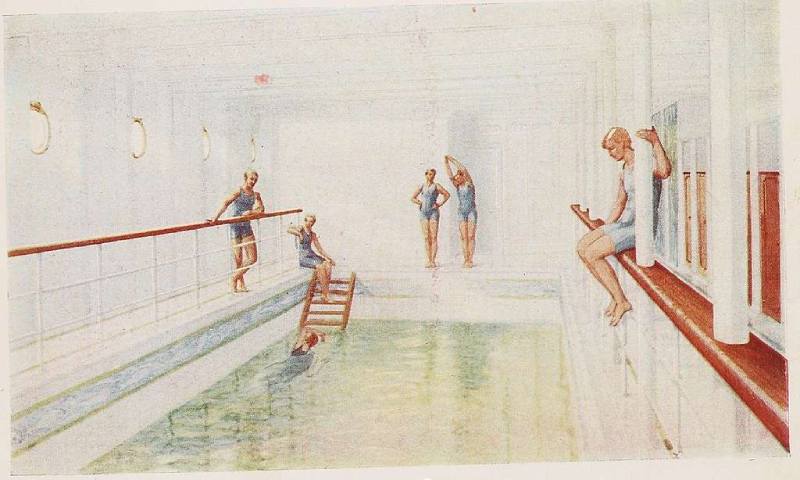
On the Titanic, first-class passengers enjoyed luxurious amenities, including a gymnasium, a heated swimming pool, a Turkish bath, a squash court, and a lavish library. Those in second class had access to comfortable lounges, a library, and spacious dining rooms, where they could enjoy good meals and participate in games or musical programs. Third-class passengers, though more limited in options, still found enjoyment in their designated smoking and common rooms where they could socialize and play games.
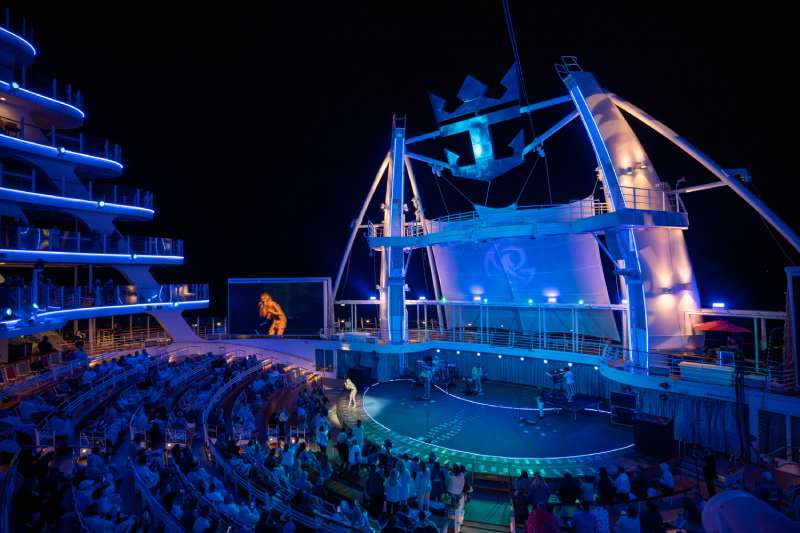
Today, the entertainment options on cruise ships are extensive and much more diverse. Passengers can enjoy Broadway-style shows, live music concerts, film screenings, an ice-skating rink, water slides, and even simulated surfing. Recreational facilities like rock climbing walls, mini-golf courses, and laser tag offer fun for all ages, ensuring that entertainment is a high point of the cruise experience.
Titanic vs. Modern Cruise Ship: Speed
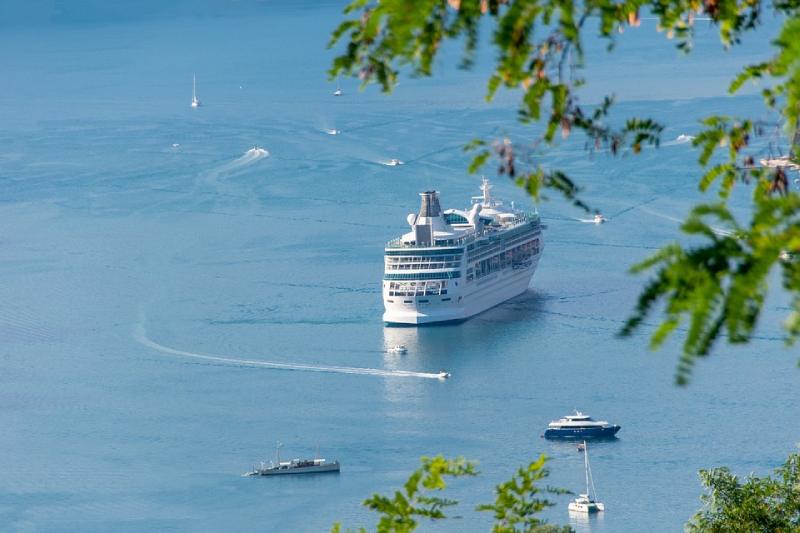
When it comes to speed, the Titanic was a relatively fast ocean liner for its time. It had a maximum speed of 23-24 knots (26 mph/42 kph). This made it one of the faster ships of the early 20th century. Speed was an important factor for transatlantic liners like the Titanic, which aimed to reduce travel time between Europe and North America.
In contrast, modern cruise ships, while built for luxury and comfort, also have impressive speeds but prioritize a balance of efficiency and passenger experience over just speed. For instance, the Wonder of the Seas and the Icon of the Seas, two of the largest cruise ships currently in service, have top speeds of about 22 knots (25 mph/41 kph). These speeds, slightly lower than the Titanic’s, are standard for today’s cruise ships. However, some modern ships, such as the Norwegian Gem and Harmony of the Seas, still outpace the Titanic, reaching speeds up to 25 knots (29 mph/46 kph).
Titanic vs. Modern Cruise Ship: Environmental Impact
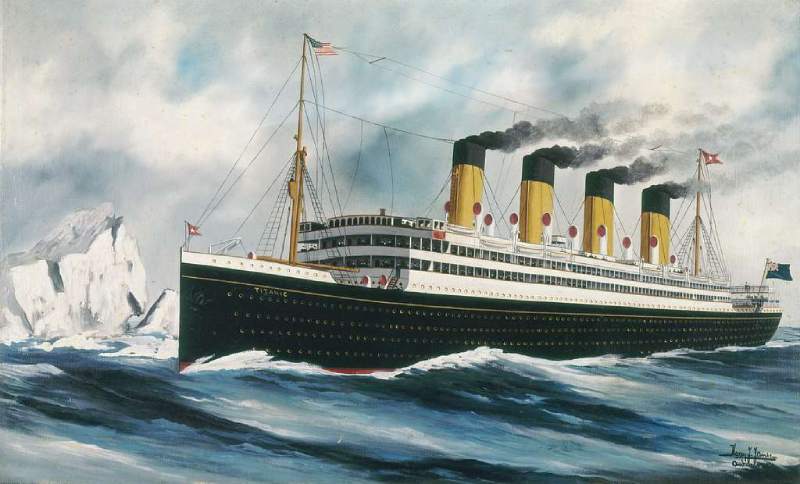
The Titanic had a high environmental impact, primarily due to its reliance on coal power. Coal-fired steam engines powered the massive vessel, releasing large amounts of soot into the atmosphere. Additionally, the inefficient combustion process and the lack of modern pollution controls meant that it also emitted a variety of pollutants, including sulfur compounds and ash.
Today’s cruise ships are primarily powered by diesel engines and, in some cases, by liquefied natural gas (LNG), which burns cleaner than coal. They are equipped with advanced emission control technologies, such as scrubbers and catalytic converters, to reduce pollution.
Final Words
Modern cruise ships have come a long way since the Titanic, with improvements in size, technology, and safety features that are truly remarkable. While the Titanic was impressive for its time, today’s cruise ships surpass it in size, capacity, and technological sophistication.
Modern cruise ships are equipped with state-of-the-art navigation systems, multiple safety measures such as lifeboats for all passengers, and luxurious facilities that cater to every need and comfort of the modern traveler. The evolution from the Titanic to current cruise ships not only reflects a century of innovation but also the transition from ocean liners focused on transportation to cruise ships designed for luxury and safety.
Titanic vs. Modern Cruise Ship – FAQ
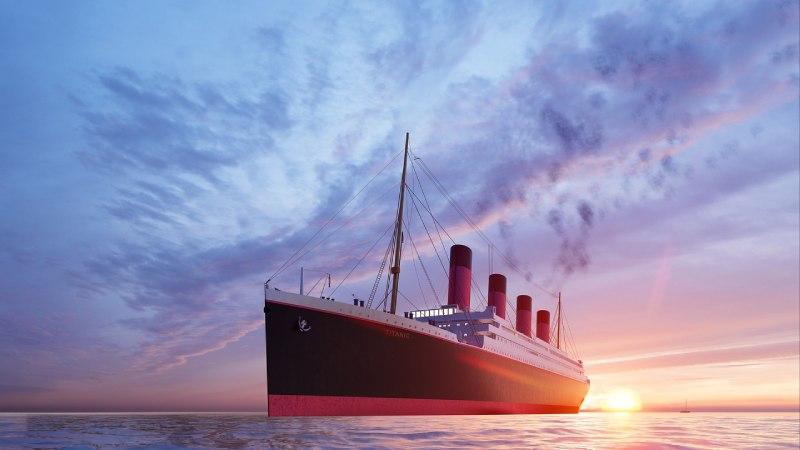
Are ships now safer than the Titanic?
Yes, ships today are much safer than the Titanic. Since the Titanic sank in 1912, there have been many advancements in ship design, safety regulations, and navigation technologies. Modern ships are built with better materials and have advanced safety features like improved lifeboats, better construction, and fire safety systems.
How many cruise ships have sunk since the Titanic?
Since the Titanic tragically sank over a century ago, more than 20 cruise ships and ocean liners have also sunk. Just like the Titanic, these ships faced various challenges and unfortunate circumstances that led to their sinking. However, it’s with today’s advanced technology and safety protocols, incidents of ships sinking are quite rare.
What cruise ship is 5 times bigger than the Titanic?
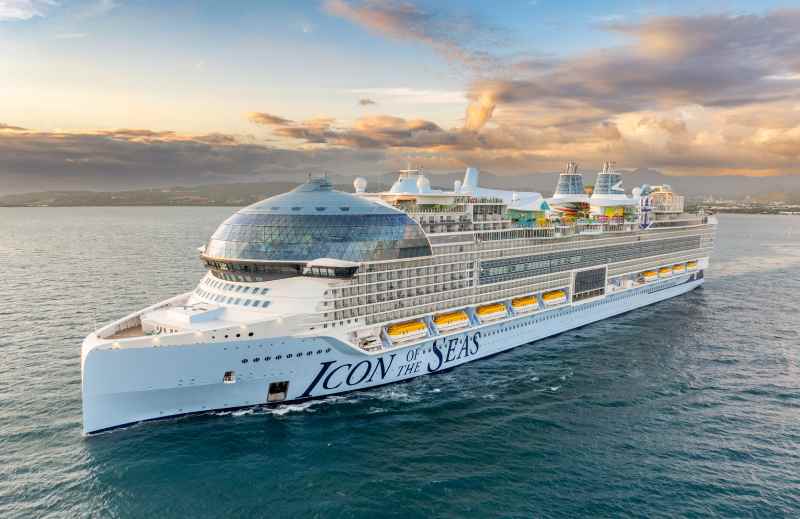
The cruise ship that is about five times bigger than the Titanic is the Icon of the Seas. With a gross tonnage (GRT) of approximately 248,663, the Icon of the Seas far surpasses the Titanic’s GRT of 46,329. This makes the Icon of the Seas around 5.3 times larger than the Titanic. As of 2024, the Icon of the Seas is the largest cruise ship in the world.
Has a modern cruise ship ever sunk?
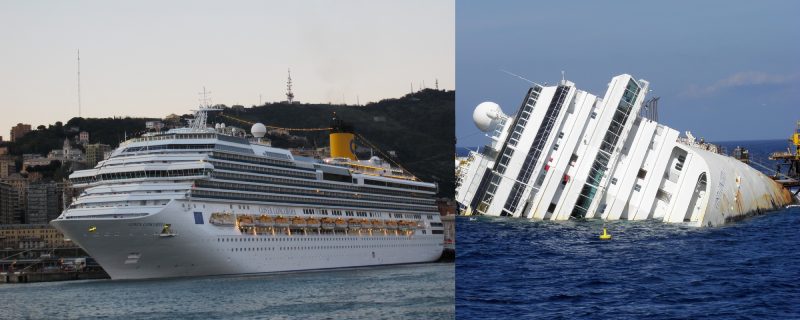
Yes, modern cruise ships have sunk, but it is a rare occurrence. One notable example is the Costa Concordia, which capsized off the coast of Italy in 2012 after hitting an underwater rock. This incident caused the deaths of 32 people. Another example is the MV Bulgaria, a Russian cruise ship that sank in the Volga River in 2011 due to overcrowding and poor maintenance, killing 122 people.
Despite these tragic incidents, cruising remains a relatively safe form of travel, especially when compared to historical standards. Modern ships are equipped with advanced safety features and navigation systems that significantly reduce the likelihood of such disasters.
What is the worlds largest cruise ship?
As of 2024, the Icon of the Seas holds the title of the world’s largest cruise ship. It stretches a massive 1,196 ft (364 m) in length and stands at 196 ft. (60 m) tall. It has a gross tonnage of 248,663 and a passenger capacity of 7,600. The ship embarked on its maiden voyage on January 27, 2024 from PortMiami.
Could a cruise ship hit an iceberg today?
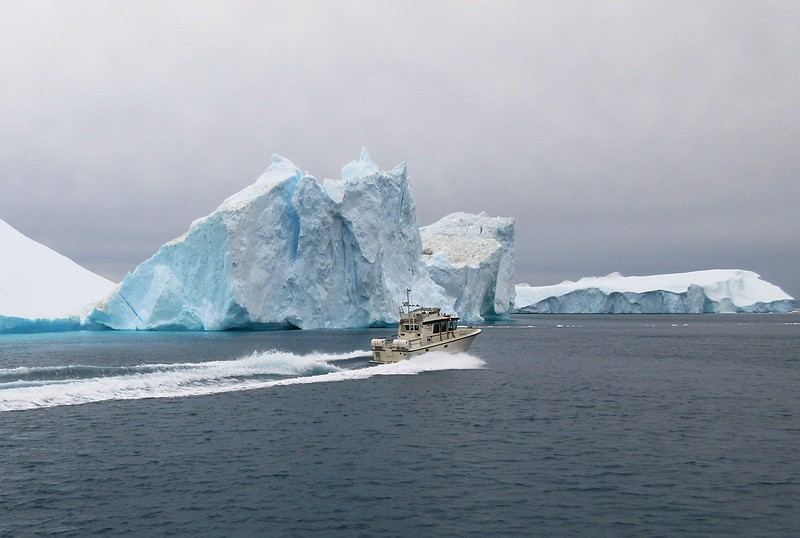
Yes, a cruise ship could still potentially hit an iceberg today, especially if it navigates through icy waters near the poles or along routes like the North Atlantic, where icebergs are commonly found.
However, the likelihood of a modern cruise ship sinking due to an iceberg collision is extremely low. Today’s ships are equipped with advanced radar and sonar systems that help detect icebergs from a great distance, giving them plenty of time to navigate safely. Additionally, cruise ships are built with stronger, more resilient hulls compared to what was available a century ago during the Titanic era.
Modern ships also benefit from sophisticated weather forecasting and GPS navigation, which help avoid dangerous conditions. Additionally, strict international regulations now require thorough safety checks and drills. All these improvements have made sea travel considerably safer than it was during the time of the Titanic.
Related articles:
